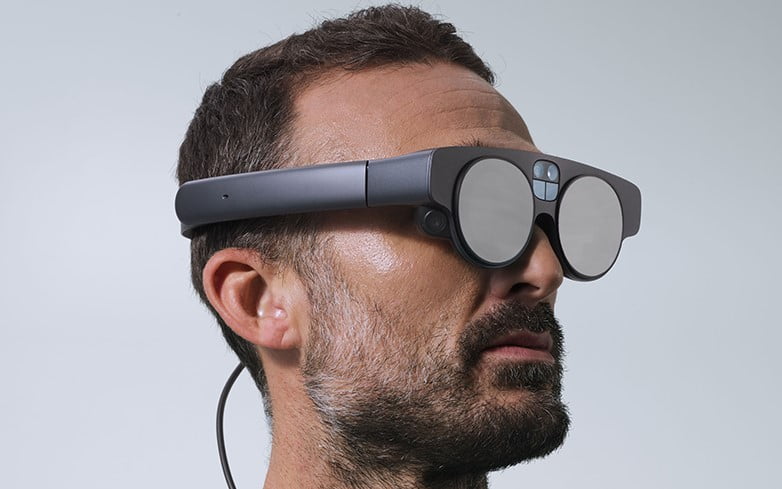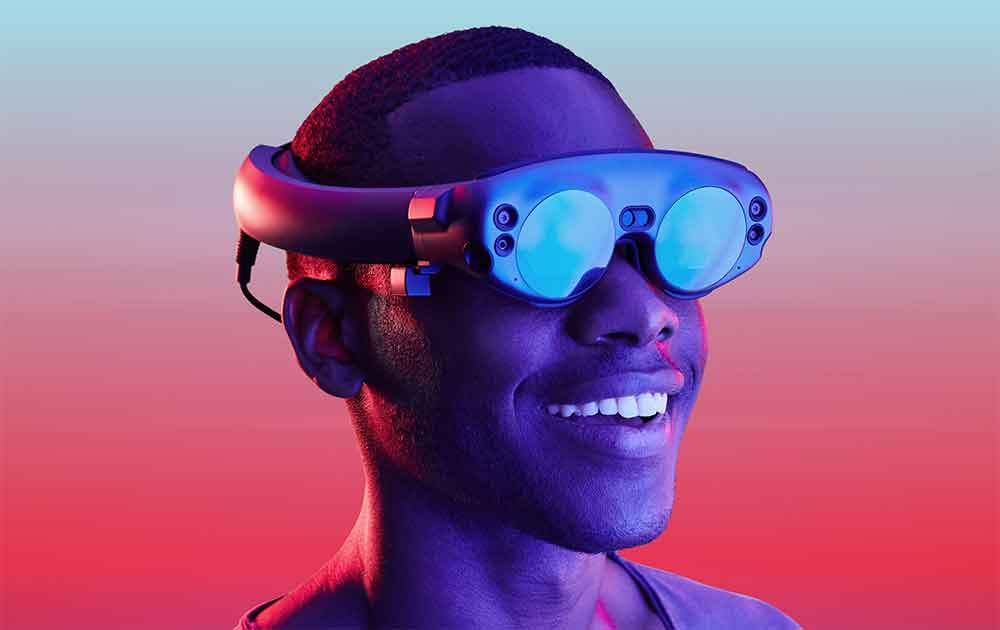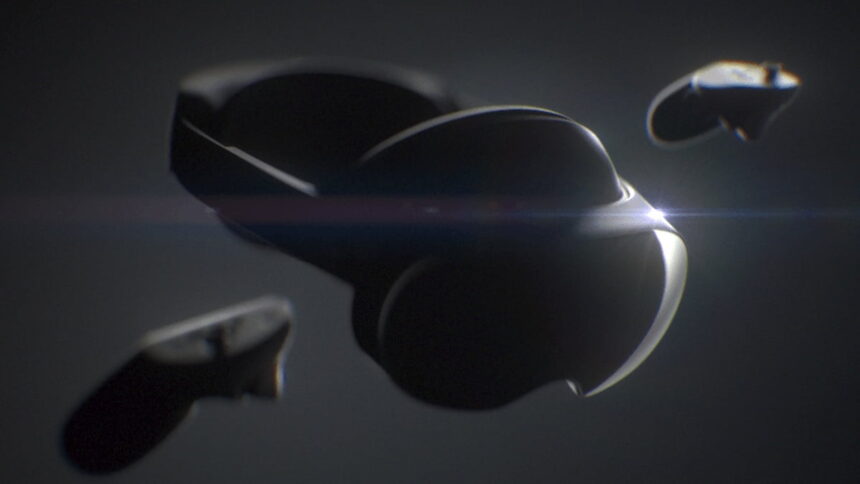The big AR dream: the next four years are decisive

Vaporware or the next big thing? In 2026, we'll probably know whether augmented reality headsets will succeed. That's also when time runs out for a 2017 prediction by Meta's chief researcher Michael Abrash.
Ten years have passed since Google Glass was unveiled. That's a very long time in the tech industry and raises the question of how far the technology has come since then. At first glance, not much has changed: There are still no useful tech glasses for everyday use.
The biggest advances have been on the software side: interfaces like ARKit and ARCore brought augmented reality to billions of smartphones and have gotten better and better over the years. Smartphone AR has nevertheless remained a niche. You can't build a sustainable industry on face filters and the one-hit-wonder Pokémon Go.
Smartphone AR could be a bridge to full-fledged AR glasses, but these are still science fiction visions. AR headsets like Hololens 2 and Magic Leap 2 have the most important AR features, but are too clunky for everyday use, while Meta's Ray-Ban Stories look good but don't even have a display. The technology is still in its infancy.
Content
Display technology remains the achilles heel of the entire AR industry
Magic Leap has made the most headlines in recent years. No other company so well illustrates the evolution of the AR industry, its rise and fall.
The startup claimed to be working on revolutionary AR glasses, and to date, a whopping $3.5 billion has poured into the company. After years of strict secrecy and rampant hype - Magic Leap's AR glasses were at times seen as a potential smartphone killer - a product came to market that barely advanced augmented reality and brought Magic Leap to the brink of bankruptcy.

The Magic Leap One: Futuristic, but not suitable for everyday use. | Image: Magic Leap
The start-up's magic bullet failed. The display technology that had impressed investors years earlier could not be miniaturized by Magic Leap to fit into a pair of glasses.
In a pinch, the startup relied on a long-standing display technology called waveguides, with all its shortcomings. The revolution became an evolution, the leap a small step.
The stagnation of augmented reality
Magic Leap lives on, thanks to investors, and is releasing a new AR headset this year: Magic Leap 2. The startup has moved away from its goal of making headsets for everyone. Magic Leap 2 is only sold to companies.
The AR hype has suffered noticeably since then and has given way to increasing skepticism. A lot of time, money and talent has been invested in the technology, but the hardware has only improved marginally. AR glasses are too expensive, too bulky, and offer too few relevant features to be of interest to consumers.
Because there is no great hardware, the killer apps are also missing: AR continues to search for a problem it can solve. It has a reputation as a gimmick and an eternal vision.
Some experts believe that advanced AR glasses that are also suitable for everyday use can never be built. Others insist that it simply needs more time. In five to ten years, it could work out, industry circles say. The iPhone moment of augmented reality keeps getting pushed back - a prime example of "moving the goalposts."
Zuckerberg’s big AR bet
Meanwhile, the big tech companies are pouring billions into research, hoping for the "next big thing." Tim Cook sees AR glasses as his potential legacy, while Mark Zuckerberg is even betting his company's future on them. According to rumors and job postings, Google, Microsoft and Amazon are also working on new devices.
Apple and Meta continue to invest the most in R&D as far as we know at present, with Meta's investments being unprecedented: More than $10 billion went into Reality Labs, Meta's VR and AR division, last year alone, and more investments are expected in the future. The company is developing several AR products and plans up to three hardware generations for the future. Billions have already flowed in previous years.

Meta maintains the largest VR and AR research lab. Zuckerberg's big Metaverse vision of the company depends largely on the success of the first real AR glasses. | Image: Meta
Zuckerberg sees virtual reality and augmented reality as a new computing platform that could help Meta break away from the smartphone ecosystems of Apple and Google. It's a bold but necessary bet on the company's long-term future, as the potential of Meta's social networks appears to have been exhausted and Meta's core business is under fire.
Meta has an ambitious roadmap
Recently, a leak by Alex Heath exposed the company's hardware roadmap. Meta plans to launch two AR-enabled devices in 2024: a technically simpler pair of data glasses (codenamed Hypernova) and a full-featured AR headset suitable for everyday use (Project Nazare), which is at the core of Zuckerberg's Metaverse vision.
The first version of Project Nazare is said to be aimed at developers and enthusiasts. A lighter and more advanced version is due in 2026, followed by the third version in 2028.
This roadmap is ambitious and shows that Meta wants to get to market as quickly as possible. That's understandable: after about a decade of research and development, Meta finally needs meaningful results. According to Heath's sources, Meta aims to sell millions of everyday tech glasses by the late 20s, but a breakthrough could take decades.
The success of Project Nazare is crucial
Whether Zuckerberg is willing to invest for that long is questionable. The pressure from investors on Meta is already high, and Reality Labs is making immense losses. Zuckerberg will have to prove that money can be made with AR glasses.
So whether Meta's plans will work out will probably only be decided in the upcoming years. I think that 2026 will be the most important year for augmented reality so far, provided that the second version of Project Nazare is released this year and is aimed at everyone.

Video AR glasses like Project Cambria will enable great augmented reality, but are quite bulky. | Image: Meta
Project Nazare is Meta's flagship project. If Reality Labs' past years, resources, and talents are not enough to build AR glasses suitable for everyday use, this could mean the end of the big AR wave that Google Glass started ten years ago.
The industry knows that the hurdles to be overcome are enormous. Barmak Heshmat, former head of optics at Meta Co, a bankrupt AR glasses startup that called itself Meta before Facebook's Metaverse pivot, said in early 2019 that AR glasses would never replace smartphones. He's now working on immersive display technology that doesn't require a headset.
"The honest truth is that the laws of physics may make it impossible to ever build true all-day AR glasses; there’s no Moore’s Law for optics, batteries, weight, or thermal dissipation," Meta's head of research Michael Abrash wrote in 2017.
He adds, "If it is possible, I think it’s highly likely that all-day AR glasses will happen within the next ten years, but it is an astonishingly difficult technical challenge on half a dozen axes, and a host of breakthroughs are going to be needed."
In 2016, when Nazare launches, those ten years will almost be over.
The clock is ticking for augmented reality
Can Meta deliver AR glasses good enough to replace the smartphone or at least a laptop?
The rumors so far feed doubts: Meta is said to not have a working wearable Nazare prototype yet and also relies more or less on the same display technology as Magic Leap and other manufacturers. Project Nazare will apparently offer more of the same, only better optimized, and no fundamental technological breakthroughs.
Of course, everything could also turn out quite differently. The market launch could be postponed for years. Apple or another competitor could come up with something better. Or Meta and others could continue to invest in augmented reality and achieve a breakthrough at a later date.
The clock is ticking for augmented reality. If there is no significant progress in terms of technology and market growth in the coming years, the technology may never escape its niche existence.
Note: Links to online stores in articles can be so-called affiliate links. If you buy through this link, MIXED receives a commission from the provider. For you the price does not change.